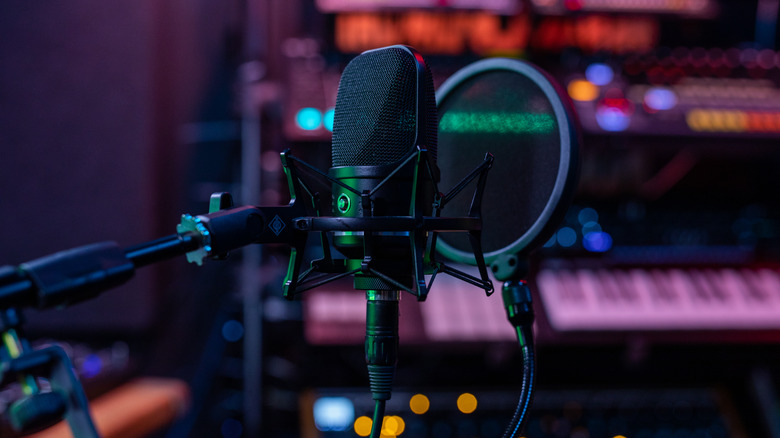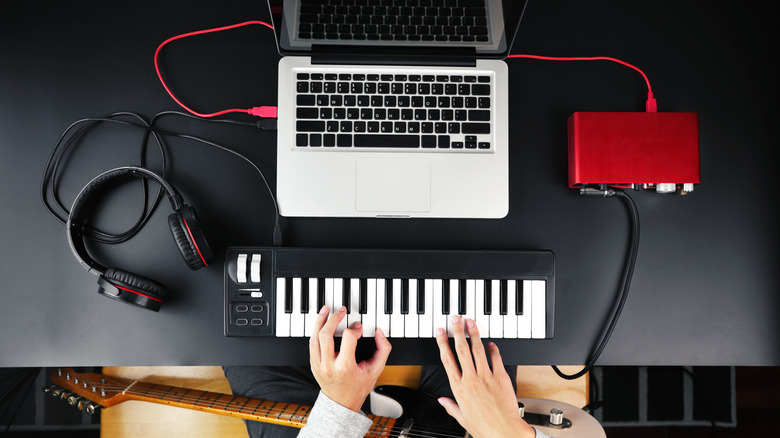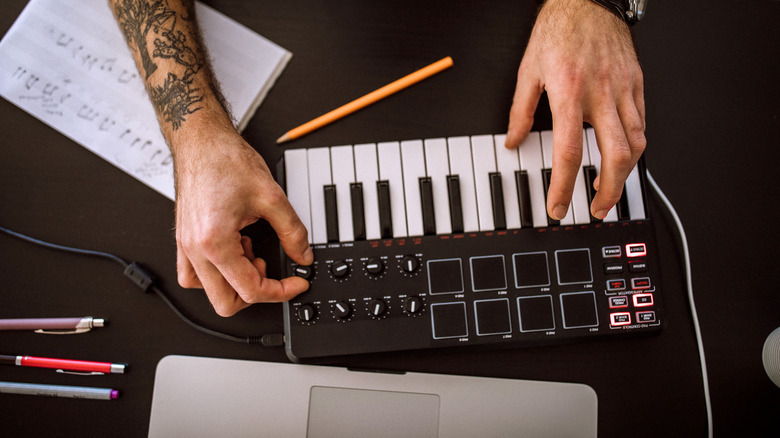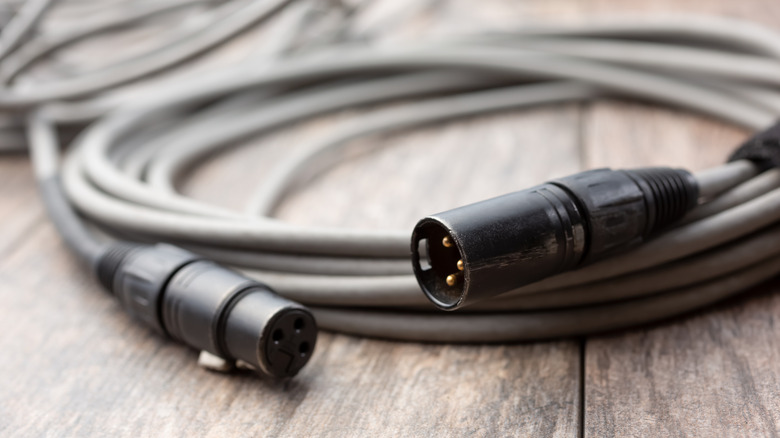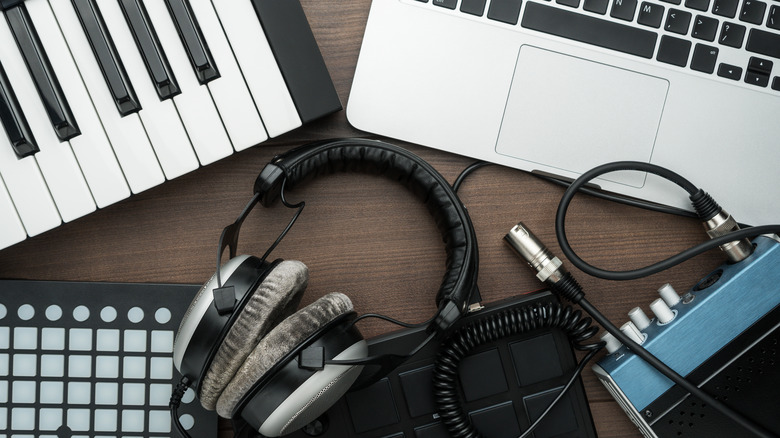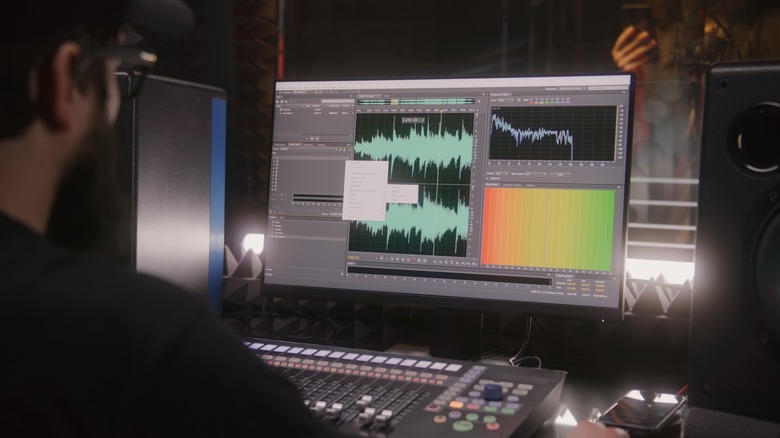5 Things To Consider When Buying An Audio Interface
An audio interface is an essential piece of equipment for any musician looking to record live music. It connects musical equipment, such as microphones and instruments, to your computer and is essential for any live band or solo musician. Not all audio interfaces are built the same, however, so it's important to pick carefully and choose an interface that meets your requirements.
There are multiple things to look for when hunting for an audio interface. Many of the key differing features depend on the size of your ensemble, the environment you'll be recording or performing in, and the types of instruments you'll be using. For example, a live band will require different types of inputs than a solo guitarist needs. Besides the obvious differences, there are some more nuanced features to look for that can deliver better sound quality and amplification if you're looking to produce professional audio.
Unlike some audio equipment that is a waste of money—an audio interface is a must-have for any musician who wants to produce or record music. All you need is a good laptop for music production, an audio interface, and a simple DAW like GarageBand 10, and you're ready to start producing some high-quality audio.
What is an audio interface?
An audio interface allows you to record and manipulate instruments such as keyboards, guitars, and microphones on your computer. This can then be interpreted by Digital Audio Workstations (DAWs) such as Logic Pro or Ableton Live. Inside a DAW is where the exciting elements of music production take place, such as adding reverb and other effects to create a polished sound.
An audio interface also outputs sound to external sound sources, such as headphones or speakers. In this way, it functions similarly to the sound card on your computer but is specifically designed for instruments and capable of handling several inputs and outputs simultaneously.
There are many reasons why you should use an audio interface over your computer's built-in sound card. Not only does it offer significantly lower latency and better quality, but it's also essential if you want to connect certain instruments to your computer. Let's look at some crucial things you need to consider before buying an audio interface.
Determine the required number of inputs and outputs
Before buying an audio interface, the first thing to consider is how many inputs and outputs you require for your music project. The more inputs you have, the greater the number of instruments you can record at once. More outputs mean you can send audio to multiple sound sources simultaneously.
For example, if you're a solo music producer working from your bedroom, you're likely not going to need an excessive number of outputs (unless you want to experiment with surround sound). On the other hand, a live band will often require more outputs, such as multiple headphone outputs for each performer. At a minimum, having a stereo and headphone output is a good idea.
Most audio interfaces feature at least two inputs, which is suitable for amateur musicians. For example, you might want to record a microphone and an instrument simultaneously. Consider a 4-input interface or higher to accommodate multiple microphones and instruments if you're in a live band setting.
Assess what types of inputs you need
Another important factor to bear in mind is the type of inputs available. This is a crucial step to ensure the interface you're buying supports the instruments you're going to use when producing music.
Different instruments require specific input types for optimal performance. The most basic input type is the XLR connection used for most microphones. If you're using condenser microphones, you'll need to check that the interface you're buying supports phantom power (typically 48 volts), as these types of microphones require more power.
Instruments such as electric guitar or bass utilize 1/4" connections. The problem with these instruments, however, is they carry high impedance, which can result in a loss of signal quality if connected to a standard 1/4" input. To fix this issue, several interfaces offer a Hi-Z input jack. This converts the high-impedance signal into a low one, improving the sound quality and reducing interference from surrounding instruments. Some audio interfaces feature a Hi-Z switch (either attached to the interface or included in the provided software program), so you can switch input types easily depending on what instrument you're recording.
Consider the number and quality of preamps
If you're using microphones in your setup, preamps are an essential component to look for in your audio interface. This technology delivers top sound quality by amplifying microphone signals to reasonable levels. These are essential in live settings but are also important when recording at home due to the low-level signal produced by standard microphones.
The good news is that you don't need to invest in a high-end audio interface to reap the benefits of microphone preamplifiers. Thanks to technological improvements, many entry-level audio interfaces feature preamps of good quality to provide clear amplification while cutting back background noises. This can be seen in brands such as Focusrite and Audient which are popular buying choices for home producers.
First and foremost, you should look at the number of preamps provided in your audio interface to check if it supports the number of instruments in your ensemble. The quality of the preamps should be a secondary measure. If you want flawless sound quality, you can explore the more expensive range of audio interfaces or purchase a separate external microphone preamp. Some interfaces, such as Audient's EVO range, have built-in features like SmartGain, which prevents issues from amplification, such as clipping.
Explore different connectivity types
Another reason to use an audio interface over your computer's sound card is that it can help reduce audio latency. This is because audio interfaces have dedicated drivers and are geared to handle ADC and DAC processing. Reducing audio latency is critical for any musician. (Those who have worked in poor latency speeds will know how frustrating it can be.) Thankfully, there are multiple connectivity types that can help reduce latency for seamless recording.
The fastest connection type offering unmatched speeds and low latency is Thunderbolt. This super-fast connection offers 20 times more bandwidth than USB 2, with its latest iterations (Thunderbolt 3 and 4) reaching transfer speeds of up to 40Gb/s. Its incredible speeds have made Thunderbolt a new industry standard for audio production.
Not all computers support Thunderbolt connections, so it's important to check your device specifications before purchasing a Thunderbolt audio interface. If your device doesn't support Thunderbolt connections, several affordable USB-C audio interfaces provide reasonable speeds and sufficiently low latency.
Look for any additional requirements
As you may have already discovered, audio interfaces vary greatly, with different models accommodating different setups. So, it's important to look at all the features on offer to see if they meet your individual requirements.
If you're using a MIDI keyboard that doesn't support a USB connection, it's important to check your audio interface offers a MIDI port (not all interfaces offer this). It's also important to assess the meter design on your audio interface, as this is one of the most common tools you'll be using to balance your audio levels.
To help minimize unnecessary work, some audio interfaces offer included software packages that you can use to manage all audio channels. The most advanced audio interfaces let you manipulate plug-ins from your DAW directly from the audio interface. One great example is Audient's ScrollControl feature, which supports leading DAWs such as Logic, Pro Tools, and Cubase. Choosing an audio interface with a software bundle can help create a more efficient workflow so you can spend more time mixing and recording tracks.
